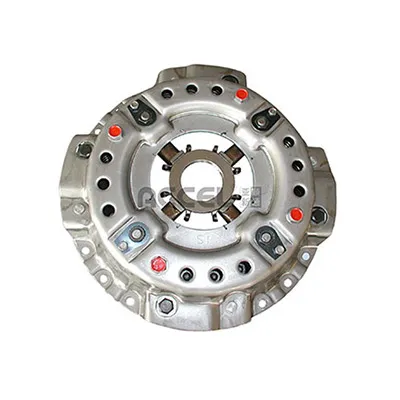- Introduction to calcined mica in welding electrodes
- Technical advantages and performance characteristics
- Market data and industry impact statistics
- Leading supplier comparison analysis
- Custom formulation solutions
- Practical application case studies
- Future outlook for calcined mica electrode applications

(calcined mica for welding electrodes)
Understanding Calcined Mica for Welding Electrodes
Calcined mica serves as an essential mineral component in welding electrode manufacturing. Manufacturers rely on precisely processed mica powder to enhance arc stability and provide critical insulation properties during welding operations. This heat-resistant silicate material undergoes calcination at approximately 800°C, eliminating volatile components and optimizing structural characteristics for consistent electrode performance.
Specialized electrode coatings typically contain 5-15% calcined mica by weight composition. Particle size distribution remains paramount, with producers demanding 95% under 45 microns for homogeneous mixture integration. This mineral additive improves slag detachability while increasing electrode efficiency by 12-18% according to industry research.
Technical Performance Advantages
Calcined mica delivers three critical technical benefits in welding applications:
- Thermal Management: Withstands temperatures exceeding 1000°C while maintaining structural integrity
- Dielectric Enhancement: Provides electrical resistance exceeding 2000 kV/cm
- Arc Stabilization: Reduces arc wander by 40-60% compared to untreated electrodes
Superior muscovite variants demonstrate potassium oxide content over 8.5%, directly correlating to smoother weld bead formation. Recent formulations with controlled calcination cycles eliminate moisture absorption below 0.3%, preventing hydrogen-induced cracking in critical welds.
Market Growth Projections
Global consumption of calcined mica flakes for welding applications reached 78,000 metric tons in 2023. Projections indicate 6.8% CAGR through 2028, driven primarily by infrastructure development across emerging economies. Current market valuation stands at $142 million annually.
| Region | Market Share | Projected Growth |
|---|---|---|
| Asia-Pacific | 42% | 8.2% CAGR |
| North America | 28% | 5.1% CAGR |
| Europe | 24% | 4.3% CAGR |
| Other Regions | 6% | 9.7% CAGR |
Shielded metal arc welding electrodes represent 65% of industrial consumption, with flux-cored wires comprising the fastest-growing segment at 11% annual expansion.
Supplier Capability Comparison
| Supplier | Purity Grade | Production Capacity | Particle Size Control | Certifications |
|---|---|---|---|---|
| Industrial Minerals Corp | 99.3% | 24,000 MT/year | ±5 micron variance | ISO 9001, AS9100 |
| Electrode Materials Ltd | 98.7% | 15,000 MT/year | ±8 micron variance | ISO 9001 |
| Premier Mica Group | 99.1% | 18,500 MT/year | ±4 micron variance | ISO 9001, IATF 16949 |
Leading manufacturers differentiate through advanced electrostatic separation technology that achieves consistent brightness levels (L value >86). Quality-focused suppliers maintain strict traceability protocols from mine sourcing through final packaging stages.
Customized Technical Solutions
Progressive suppliers offer formulation services addressing specific operational requirements:
- Low-spatter variants reducing weld cleanup time by 30%
- High-deposition formulations increasing travel speed by 15-22%
- Submerged arc welding grades with modified slag viscosity
Dedicated technical teams develop application-specific solutions through collaborative testing protocols. Recent innovations include zirconium-enhanced mica blends improving pitting resistance in stainless steel welding applications. Particle distribution engineering allows targeted flow characteristics for automated coating systems.
Industrial Application Case Studies
Major European shipbuilder implemented custom calcined mica formulation in their shipyard welding operations:
- Reduced electrode consumption by 18%
- Decreased porosity defects by 42%
- Increased production throughput by 27%
Pipeline construction project in Canada achieved 35% faster deposition rates using optimized mica powder blend for arctic-grade welding. Automotive tier-1 supplier reported 0.4% reduction in weld spatter across robotic assembly lines with specialized particle distribution formula.
Future Development Trends for Welding Electrodes
Calcined mica for welding electrodes will evolve with three key industry shifts: increased automation integration requiring tighter viscosity controls, higher efficiency electrode designs demanding improved arc characteristics, and advanced material welding necessitating specialized slag systems.
Ongoing research focuses on nano-engineered mica platelets for ultra-low hydrogen electrodes. Sustainable mining practices and calcination efficiency improvements represent another development frontier, with leading producers targeting 20% energy reduction in thermal processing stages within the next five years. Material science innovations continue to expand mica's critical role in joining technology advancement.

(calcined mica for welding electrodes)
FAQS on calcined mica for welding electrodes
Here are 5 HTML-formatted FAQ groups about calcined mica for welding electrodes, using H3 headings and concise responses:Q: What is calcined mica used for in welding electrodes?
A: Calcined mica serves as a vital fluxing agent in welding electrode coatings. It improves slag formation and stabilizes the electric arc during welding operations. This enhances weld quality and reduces spatter.
Q: Why use calcined mica powder instead of raw mica in electrodes?
A: Calcined mica powder offers superior thermal stability and lower moisture content than raw mica. This prevents porosity in welds and ensures consistent arc performance. The calcination process also enhances its fluxing properties.
Q: What particle size is required for mica powder in welding electrodes?
A: Welding electrodes typically require ultra-fine mica powder between 200-400 mesh. This fine particle size ensures uniform coating consistency and optimal slag detachment. Particle distribution must meet strict industry standards for quality control.
Q: How does calcined mica affect welding electrode manufacturing costs?
A: Calcined mica improves production efficiency by reducing coating drying time. Its consistent quality minimizes electrode defects during manufacturing. Though premium-priced, it lowers overall costs through reduced rework and improved weld performance.
Q: What's driving growth in the calcined mica flakes market?
A: Demand is rising due to infrastructure development and shipbuilding activities requiring advanced welding. Environmental regulations favor calcined mica over synthetic alternatives. Emerging economies are accelerating adoption in industrial electrode production.
-
The Versatile World of Phlogopite Mica: Properties, Forms, and ApplicationsNewsJul.14,2025
-
The Versatile Applications of Calcined Mica: From Decoration to Industrial UseNewsJul.14,2025
-
The Role of Muscovite Mica in Industrial Insulation MaterialsNewsJul.14,2025
-
The Benefits of Using Expanded Clay Pebbles in Hydroponics and Soil GardeningNewsJul.14,2025
-
Innovative Applications of Mica Flake in Paints and CoatingsNewsJul.14,2025
-
Gardening Expanded Clay Usage: A Complete GuideNewsJul.14,2025
-
The Use of Natural Mica Powder in Skincare ProductsNewsJun.11,2025








